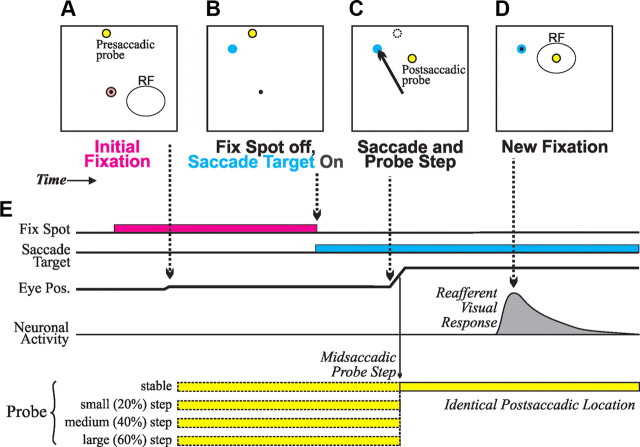Figure 2.
Saccadic translation task. A–D, Diagrams of task events. E, Time line of task events. Dotted arrows connect task events in A–D to the relevant points on the time line. To summarize, a monkey fixated a spot, and shortly thereafter, a presaccadic probe appeared outside of the RF. After a few hundred milliseconds, the fixation spot disappeared and a saccade target appeared (presaccadic probe was still present). The monkey made a saccade to the target, and, during the saccade, the probe remained stable or stepped a varying distance (“small”, “medium”, and “large” steps were, respectively, 20, 40, and 60% of the fixation spot-saccade target distance). In every trial, the probe was identical after the saccade: it was always at the center of the postsaccadic RF. The presence of the postsaccadic probe in the RF elicited a reafferent visual response, which was the focus of our neuronal analyses. See text for other details of the task.

